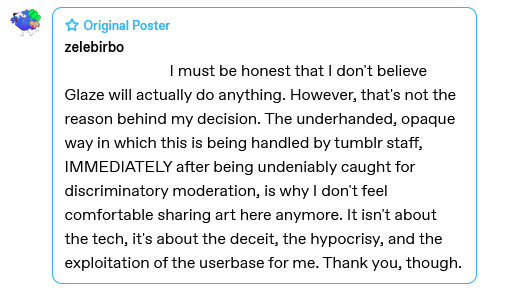#Data data management
Explore tagged Tumblr posts
Text
Data Orchestration Guide: Introduction, Process, Components, Implementation and Benefits
An In-Depth Look at Data Orchestration Process, Components, Implementation and Benefits
In today’s data-driven world, businesses are swimming in an ocean of information. Data resides in various formats across countless databases, applications, and servers. This fragmented data, often siloed and inconsistent, makes it difficult to extract valuable insights. Here’s where data orchestration comes in, acting as the conductor that harmonizes this data chaos into a symphony of actionable intelligence.
What is Data Orchestration?
Data orchestration refers to the automated process of integrating and managing data from various sources, ensuring it is accessible, processed, and delivered to the right systems or stakeholders at the right time. It involves coordinating different data processes — such as collection, integration, transformation, and delivery — across multiple systems, applications, and environments.
The main goals of data orchestration include improving data accessibility, enhancing data quality, ensuring data compliance, and optimizing data workflows for more efficient operations. By automating these processes, organizations can handle large volumes of data more effectively, enabling better decision-making, streamlined operations, and personalized customer experiences.
Data orchestration tools and platforms play a crucial role in achieving these objectives by providing the necessary infrastructure to automate data workflows, manage data pipelines, and ensure seamless data integration across the enterprise’s technology ecosystem.
Why Data Orchestration? The Core Benefits
The benefits of data orchestration are multifaceted, impacting various aspects of an organization’s operations:
Enhanced Data Accessibility and Quality
Data orchestration streamlines the process of aggregating data from various sources — be it cloud-based applications, on-premises databases, or IoT devices — ensuring that it’s not only accessible but also of high quality. By automating data integration and preparation processes, organizations can ensure that their data is clean, consistent, and ready for analysis, thereby laying the groundwork for accurate and insightful decision-making.
Operational Efficiency and Agility
In the absence of data orchestration, IT teams often find themselves bogged down by manual data management tasks that are both time-consuming and prone to errors. Data orchestration automates these mundane processes, freeing up valuable resources to focus on strategic initiatives. Moreover, by enabling real-time data processing and delivery, organizations can respond to market changes with greater agility, maintaining a competitive edge.
Scalability and Future-readiness
As businesses grow, so do their data volumes and processing needs. Data orchestration solutions are designed to scale, accommodating increasing data loads without compromising performance. This scalability ensures that organizations can meet their current data demands while also being equipped to handle future growth, thereby future-proofing their data management strategy.
Improved Data Governance and Compliance
With data privacy regulations tightening globally, maintaining compliance is more critical than ever. Data orchestration facilitates better data governance by providing centralized control over data access, processing, and storage. This centralized approach not only helps in enforcing compliance with regulations such as GDPR and CCPA but also enhances data security, minimizing the risk of breaches.
Accelerated Time-to-Insight
In today’s fast-paced business environment, the speed at which organizations can derive insights from their data can be a game-changer. Data orchestration accelerates the end-to-end data processing cycle — from collection and integration to analysis and reporting — enabling businesses to act on insights more quickly and effectively.

Data Orchestration Process: How It Works
The 5 main steps of data orchestration include data collection, data integration, data transformation, workflow automation, and data delivery. Let’s explore them in detail:
Step 1: Data Collection
The opening act of data orchestration begins with data collection. In this stage, data is gathered from a myriad of sources such as databases, cloud storage, IoT devices, and external APIs. The diversity of data types and sources poses the first challenge, necessitating a flexible orchestration system capable of handling this variety seamlessly.
Step 2: Data Integration
Following collection, the next step is to integrate this disparate data. Data integration involves consolidating data into a unified format, ready for further processing. This step is crucial for breaking down silos within an organization, ensuring that data from various departments and systems can be analyzed together, providing a comprehensive view.
Step 3: Data Transformation
With the data now in a single system, it undergoes transformation. This stage refines the data, cleansing it of inaccuracies, converting it into a consistent format, and sometimes aggregating or summarizing data for more straightforward analysis. The transformation is tailored to the business’s needs, preparing the data for insightful analysis and decision-making.
Step 4: Workflow Automation
The heart of data orchestration lies in workflow automation. This involves defining and automating the sequence of tasks that data must undergo, from its entry point to its final destination. Automation ensures efficiency, reducing manual errors and freeing up valuable resources for strategic tasks rather than repetitive data processing.
Step 5: Data Delivery
The finale of the data orchestration process is the delivery of data. Here, the processed and refined data is moved to its destination — be it a data warehouse, an analytics platform, or another system. This stage is critical for ensuring that data is available where it’s needed, in the right format, and at the right time, empowering stakeholders to make informed decisions.
Encore: The Tools and Technologies Powering Data Orchestration
Behind the scenes of data orchestration are robust tools and technologies that make the process possible. From data integration platforms like Informatica and Talend to workflow automation tools like Apache Airflow and Prefect, these technologies are the unsung heroes. They provide the infrastructure necessary to manage the complexity of data workflows, ensuring data’s smooth passage through each orchestration stage.
Final Bow: The Strategic Imperative of Data Orchestration
Data orchestration is not just about managing data flow; it’s a strategic imperative in today’s data-driven landscape. By ensuring data is accurately collected, integrated, transformed, and delivered, businesses can unlock actionable insights, drive efficiency, and maintain a competitive edge. It’s a process that requires investment in the right tools, technologies, and expertise, but the payoff is a data management strategy that can scale with your business, adapt to new challenges, and continue to drive value in an ever-evolving digital world.
Key Components of Data Orchestration

Data Integration: This forms the bridge between disparate data sources. Data orchestration tools act as powerful connectors, seamlessly siphoning data from databases, applications, cloud storage, and external APIs. Imagine a data lake where information from various streams converges — data integration tools ensure these streams flow smoothly without unwanted obstacles.
Data Transformation: Raw data, in its native state, is often messy and inconsistent. Data transformation acts as the refinery, cleaning, standardizing, and manipulating the data to ensure its usability for analysis. This involves tasks like handling missing values, converting data formats (e.g., dates, currencies) to a consistent language, resolving inconsistencies, and enriching data with additional context. Think of transforming raw ore into usable metal — data transformation removes impurities and prepares the data for further processing.
Workflow Automation: This is the engine that keeps the data orchestration machine running. Here, the focus is on automating the sequence of steps involved in data processing, encompassing everything from extraction and transformation to loading the data into its final destination. Data orchestration tools excel at managing dependencies, ensuring each step is triggered only when the previous task is complete. Imagine an assembly line where each station performs a specific task — workflow automation orchestrates the data processing pipeline with clockwork precision.
Data Monitoring & Error Handling: Even in an automated world, hiccups are inevitable. Data orchestration tools include robust monitoring functionalities that act as watchful guardians. They continuously track data pipelines, identify errors (like data quality issues or processing failures), and send alerts for prompt intervention. Effective error handling safeguards data integrity and prevents issues from cascading down the pipeline, ensuring a smooth flow of clean data.
Data Security: Security is of paramount importance when dealing with sensitive data. Data orchestration tools incorporate robust security features to build a strong fortress around your data assets. This includes access control to restrict unauthorized access, encryption to scramble data during transmission and storage, and data lineage tracking to maintain a detailed record of the data’s origin and movement within the system. Data orchestration tools empower organizations to comply with data privacy regulations and ensure that data is handled responsibly.
Scheduling & Dependency Management: Data pipelines can be intricate, with complex dependencies between tasks. For instance, a marketing analytics report might require sales and customer relationship management (CRM) data to be processed first. Data orchestration tools provide the capability to schedule tasks and manage these dependencies. This ensures data is processed in the correct order and at the designated time, preventing delays or errors caused by out-of-sequence processing. Imagine a carefully choreographed dance — scheduling and dependency management ensure the data processing steps move in perfect harmony.
By working in concert, these key components orchestrate a smooth flow of data, transforming isolated information into a valuable asset that empowers organizations to make data-driven decisions and achieve strategic goals.
Implementing Data Orchestration
Before diving into implementation, it’s crucial to grasp what data orchestration entails. It involves coordinating various data processes — collection, integration, transformation, and delivery — across different systems and platforms. The goal is to ensure data flows smoothly and efficiently, making it accessible and actionable for decision-making and operations.
Step 1: Assess Your Data Landscape
The first step in implementing data orchestration is to thoroughly assess your current data landscape. Understand where your data resides, how it’s being used, and the challenges you face in managing it. This assessment should cover data sources, storage solutions, data formats, and any existing workflows or pipelines.
Step 2: Define Your Objectives
With a clear understanding of your data landscape, the next step is to define your objectives for data orchestration. What are your business goals? Are you looking to improve decision-making speed, enhance data quality, achieve regulatory compliance, or all the above? Setting clear, measurable objectives will guide your orchestration strategy and help you track its success.
Step 3: Choose the Right Tools and Technologies
Selecting the appropriate tools and technologies is pivotal for effective data orchestration. The market offers a plethora of options, from cloud-based platforms like AWS Data Pipeline, Azure Data Factory, and Google Cloud Dataflow, to specialized software like Apache Airflow and Prefect. Consider factors such as scalability, compatibility with your existing systems, and specific features that align with your objectives.
Step 4: Establish Data Governance
Data governance is the foundation of any successful data orchestration initiative. Establish clear policies and procedures for data management, including data quality, security, privacy, and compliance standards. This framework will ensure that your data orchestration efforts are aligned with organizational policies and regulatory requirements.
Step 5: Design Your Data Orchestration Workflow
With the right tools in place and governance framework established, you can begin designing your data orchestration workflow. Map out how data will move through your systems, from ingestion to delivery. Define the transformations it needs to undergo and identify any potential bottlenecks or challenges. This workflow should be flexible enough to adapt to changing business needs and data sources.
Step 6: Implement, Test, and Iterate
With planning and preparation complete, it’s time to implement your data orchestration workflow. Start small with a pilot project or a specific data pipeline to test your setup. Monitor performance closely, and be prepared to iterate based on feedback and outcomes. Continuous improvement is key to refining your data orchestration process.
Step 7: Monitor, Optimize, and Scale
Once your data orchestration workflow is operational, ongoing monitoring and optimization are essential. Use analytics and monitoring tools to track performance, identify inefficiencies, and make adjustments as needed. As your organization grows and evolves, be prepared to scale your data orchestration efforts to meet new demands.
Best Practices for Data Orchestration Implementation
Embrace Automation: Automate as much of the data orchestration process as possible to reduce manual errors and improve efficiency.
Focus on Data Quality: Implement robust data cleaning and validation processes to ensure high data quality.
Ensure Scalability: Choose solutions that can scale with your data volume and complexity.
Foster Collaboration: Encourage collaboration between IT, data teams, and business units to ensure the orchestration strategy aligns with organizational goals.
Implementing data orchestration is a journey that requires careful planning, execution, and continuous improvement. By following these steps and best practices, you can create a robust data orchestration strategy that enhances your data management, drives business insights, and positions your organization for success in the data-driven world.
Conclusion
In conclusion, data orchestration is a critical capability for organizations that wish to leverage their data as a strategic asset. Data orchestration is not just a technological initiative; it’s a strategic imperative for organizations aiming to thrive in the data-driven economy. By enabling efficient, secure, and scalable data management, orchestration lays the foundation for insightful analytics, informed decision-making, and operational excellence. As businesses continue to navigate the complexities of the digital landscape, embracing data orchestration will be key to unlocking their data’s full potential, driving growth, and sustaining competitive advantage.
By automating the collection, integration, transformation, and delivery of data, organizations can improve efficiency, foster better decision-making, and gain a competitive edge in today’s data-driven world. In this article, we walked through all you need to get started with data orchestration, a widely practiced technique among data engineers today.
#Data data management#orchestration#Guide#Solutions#Detailed#Competitive#Business#Competitive edge#Data orchestration#intelligence
1 note
·
View note
Text

415 notes
·
View notes
Text
Reverse engineers bust sleazy gig work platform

If you'd like an essay-formatted version of this post to read or share, here's a link to it on pluralistic.net, my surveillance-free, ad-free, tracker-free blog:
https://pluralistic.net/2024/11/23/hack-the-class-war/#robo-boss

A COMPUTER CAN NEVER BE HELD ACCOUNTABLE
THEREFORE A COMPUTER MUST NEVER MAKE A MANAGEMENT DECISION
Supposedly, these lines were included in a 1979 internal presentation at IBM; screenshots of them routinely go viral:
https://twitter.com/SwiftOnSecurity/status/1385565737167724545?lang=en
The reason for their newfound popularity is obvious: the rise and rise of algorithmic management tools, in which your boss is an app. That IBM slide is right: turning an app into your boss allows your actual boss to create an "accountability sink" in which there is no obvious way to blame a human or even a company for your maltreatment:
https://profilebooks.com/work/the-unaccountability-machine/
App-based management-by-bossware treats the bug identified by the unknown author of that IBM slide into a feature. When an app is your boss, it can force you to scab:
https://pluralistic.net/2023/07/30/computer-says-scab/#instawork
Or it can steal your wages:
https://pluralistic.net/2023/04/12/algorithmic-wage-discrimination/#fishers-of-men
But tech giveth and tech taketh away. Digital technology is infinitely flexible: the program that spies on you can be defeated by another program that defeats spying. Every time your algorithmic boss hacks you, you can hack your boss back:
https://pluralistic.net/2022/12/02/not-what-it-does/#who-it-does-it-to
Technologists and labor organizers need one another. Even the most precarious and abused workers can team up with hackers to disenshittify their robo-bosses:
https://pluralistic.net/2021/07/08/tuyul-apps/#gojek
For every abuse technology brings to the workplace, there is a liberating use of technology that workers unleash by seizing the means of computation:
https://pluralistic.net/2024/01/13/solidarity-forever/#tech-unions
One tech-savvy group on the cutting edge of dismantling the Torment Nexus is Algorithms Exposed, a tiny, scrappy group of EU hacker/academics who recruit volunteers to reverse engineer and modify the algorithms that rule our lives as workers and as customers:
https://pluralistic.net/2022/12/10/e2e/#the-censors-pen
Algorithms Exposed have an admirable supply of seemingly boundless energy. Every time I check in with them, I learn that they've spun out yet another special-purpose subgroup. Today, I learned about Reversing Works, a hacking team that reverse engineers gig work apps, revealing corporate wrongdoing that leads to multimillion euro fines for especially sleazy companies.
One such company is Foodinho, an Italian subsidiary of the Spanish food delivery company Glovo. Foodinho/Glovo has been in the crosshairs of Italian labor enforcers since before the pandemic, racking up millions in fines – first for failing to file the proper privacy paperwork disclosing the nature of the data processing in the app that Foodinho riders use to book jobs. Then, after the Italian data commission investigated Foodinho, the company attracted new, much larger fines for its out-of-control surveillance conduct.
As all of this was underway, Reversing Works was conducting its own research into Glovo/Foodinho's app, running it on a simulated Android handset inside a PC so they could peer into app's data collection and processing. They discovered a nightmarish world of pervasive, illegal worker surveillance, and published their findings a year ago in November, 2023:
https://www.etui.org/sites/default/files/2023-10/Exercising%20workers%20rights%20in%20algorithmic%20management%20systems_Lessons%20learned%20from%20the%20Glovo-Foodinho%20digital%20labour%20platform%20case_2023.pdf
That report reveals all kinds of extremely illegal behavior. Glovo/Foodinho makes its riders' data accessible across national borders, so Glovo managers outside of Italy can access fine-grained surveillance information and sensitive personal information – a major data protection no-no.
Worse, Glovo's app embeds trackers from a huge number of other tech platforms (for chat, analytics, and more), making it impossible for the company to account for all the ways that its riders' data is collected – again, a requirement under Italian and EU data protection law.
All this data collection continues even when riders have clocked out for the day – its as though your boss followed you home after quitting time and spied on you.
The research also revealed evidence of a secretive worker scoring system that ranked workers based on undisclosed criteria and reserved the best jobs for workers with high scores. This kind of thing is pervasive in algorithmic management, from gig work to Youtube and Tiktok, where performers' videos are routinely suppressed because they crossed some undisclosed line. When an app is your boss, your every paycheck is docked because you violated a policy you're not allowed to know about, because if you knew why your boss was giving you shitty jobs, or refusing to show the video you spent thousands of dollars making to the subscribers who asked to see it, then maybe you could figure out how to keep your boss from detecting your rulebreaking next time.
All this data-collection and processing is bad enough, but what makes it all a thousand times worse is Glovo's data retention policy – they're storing this data on their workers for four years after the worker leaves their employ. That means that mountains of sensitive, potentially ruinous data on gig workers is just lying around, waiting to be stolen by the next hacker that breaks into the company's servers.
Reversing Works's report made quite a splash. A year after its publication, the Italian data protection agency fined Glovo another 5 million euros and ordered them to cut this shit out:
https://reversing.works/posts/2024/11/press-release-reversing.works-investigation-exposes-glovos-data-privacy-violations-marking-a-milestone-for-worker-rights-and-technology-accountability/
As the report points out, Italy is extremely well set up to defend workers' rights from this kind of bossware abuse. Not only do Italian enforcers have all the privacy tools created by the GDPR, the EU's flagship privacy regulation – they also have the benefit of Italy's 1970 Workers' Statute. The Workers Statute is a visionary piece of legislation that protects workers from automated management practices. Combined with later privacy regulation, it gave Italy's data regulators sweeping powers to defend Italian workers, like Glovo's riders.
Italy is also a leader in recognizing gig workers as de facto employees, despite the tissue-thin pretense that adding an app to your employment means that you aren't entitled to any labor protections. In the case of Glovo, the fine-grained surveillance and reputation scoring were deemed proof that Glovo was employer to its riders.
Reversing Works' report is a fascinating read, especially the sections detailing how the researchers recruited a Glovo rider who allowed them to log in to Glovo's platform on their account.
As Reversing Works points out, this bottom-up approach – where apps are subjected to technical analysis – has real potential for labor organizations seeking to protect workers. Their report established multiple grounds on which a union could seek to hold an abusive employer to account.
But this bottom-up approach also holds out the potential for developing direct-action tools that let workers flex their power, by modifying apps, or coordinating their actions to wring concessions out of their bosses.
After all, the whole reason for the gig economy is to slash wage-bills, by transforming workers into contractors, and by eliminating managers in favor of algorithms. This leaves companies extremely vulnerable, because when workers come together to exercise power, their employer can't rely on middle managers to pressure workers, deal with irate customers, or step in to fill the gap themselves:
https://projects.itforchange.net/state-of-big-tech/changing-dynamics-of-labor-and-capital/
Only by seizing the means of computation, workers and organized labor can turn the tables on bossware – both by directly altering the conditions of their employment, and by producing the evidence and tools that regulators can use to force employers to make those alterations permanent.

Image: EFF (modified) https://www.eff.org/files/issues/eu-flag-11_1.png
CC BY 3.0 http://creativecommons.org/licenses/by/3.0/us/
#pluralistic#etui#glovo#foodinho#alogrithms exposed#reverse engineering#platform work directive#eu#data protection#algorithmic management#gdpr#privacy#labor#union busting#tracking exposed#reversing works#adversarial interoperability#comcom#bossware
352 notes
·
View notes
Text
anyone who calls service industry jobs unskilled labor has never watched a teenager wrangle a burrito the size of an infant into one square foot of aluminum foil
#i am only half joking when i say 'skill' has become a word used to gatekeep better wages smh#skills rest on a scale. it takes skill to talk to people on the phone and gather data and present at meetings yes#but it also takes skill to memorize multiple customer orders and juggle various duties throughout#it takes skill to manage a fast food kitchen's chaos and it takes skill to keep a facility clean#it takes SKILL to perform a mind numbing task for hours at a time and still maintain some semblance of quality#it takes skill to deal with assholes all day and still perform your duties. even MORE to stay externally positive throughout#i think there'd be way more complaints if an office took over a taco bell for a day than if a taco bell staff took over an office js#anyways one more thing to tack onto the list of things calico gets pissed about#mini rant
96 notes
·
View notes
Text

refining my book Murderbot design! Obviously, it needs lots of pockets in its line of work, and plenty more screentime. I think this would be early mb, first and second book as it starts to find the ways it feels most comfortable. I also feel like a tiny, scruffy ponytail for when its hair starts to grow out is just a necessity. It's a busy secunit-- it doesn't have time to deal with that mullet!
I tried to include the tech aspects in a few spots, like the arm that it removes in one of the later books and reattaches, built in earrings for its feed, and some facial joining points. All its feeds face towards itself-- but a career in printmaking has prepared me for writing all the backwards text!
No justification for the blue hair, it just felt right (: Anyone else headcannon mb with a non-natural hair colour or other specific elements?
#murderbot#murderbot diaries#sanctuary moon#tmbd#all systems red#artificial condition#i love how it constantly multitasks watching its fav shows while actively managing 4 other tasks#mb would be a trekkie im certain#however hot take i feel that Data would drive it nuts#murderbot fanart
31 notes
·
View notes
Text

William "I wish you were a woman so I could kiss you" Shatner
[Image ID: A screenshot of Twitter. User Greg Rappa asks William Shatner, "You're a great writer, as well as a great actor, so if you created Star Trek, how different do you think it might've been from Gene Roddenberry's v...(vision.)" Shatner quote tweets them and replies, "It would be me with an all female cast. Then you would have saw Spirk! 😝🤣" End ID]
#where's the shatnoy crackshippers...#anyway. There's like 2 layers of conspiracy theory/lore about his twt.. I have my own theories#(if only his social media manager is running it then why does he tweet about destiel rp all the way back in 2014 and keep it going up til#now? his social media guy hasn't been hired since then. but then there's the drama with Data's actor - was he lying? or did his SM manager#take over ostensibly after the last destiel tweet? are they both on there? if so whose tweets are whose? etc etc)#anyway. idk about this one king maybe next time we leave it in the drafts
40 notes
·
View notes
Text
Tumblr & Going Forward
With the confirmation of AI deals and allegations of user data already being sold before they could consent to it, I no longer feel comfortable posting artwork on tumblr. This is a decision more on principle than practicality.
I will be leaving everything I've posted here up, unless I decide to delete entirely. Doing so would also be based on principle, as all signs points to there being no point otherwise. Deleted blogs sold to OpenAi. Jesus christ.
As of now, I'm strictly on Discord, but I don't feel comfortable sharing my private discord publicly. I have a business discord, but that is, as it says on the tin, for business. If you're interested in hiring me or having me as a professional contact, feel free to send an ask or IM. Wherever I decide to share my art next, I will post an announcement here.
Until then, I advise everyone to opt out. And maybe research if this counts as a security violation that could be brought to court. I dunno.
EDIT: This is getting a bizarre amount of attention, and starting to get replies suggesting Glaze as a solution. I elaborated on why exactly I no longer feel comfortable posting art here in the replies of this post:


TL;DR - I don't care about the tech. I care about the deceitful way this deal was handled, and how it's the latest in an escalating pattern of deceit and abuse towards tumblr's userbase.
#zele squawks#i never want to hear tumblr management use the 'we don't sell your data so please donate!' line again.
198 notes
·
View notes
Text
I actually don't have any sense to what extent "male loneliness" is a real problem, like if the social trends being described are real and if they're especially bad for men, but it is annoying to me about how kneejerk a lot of the conversation is around it. Bc let's be real, there is a specific type of person who is ideologically committed to rejecting the suggestion that any kind of social problem is worse for men, and even if it is, thinks talking about it is with that framing means Letting MRAs Win, which is very tedious
#Possibly I am being naive here and this is something that is not reasonable to believe is a Thing#The data could be based on low-quality studies or could be misrepresented by the press#And people could be ignoring flaws they'd otherwise overlook bc it accords with their preconceptions or political agenda#Many such cases#And it could also be worth pointing out that even if the social problems described are likely real#The conversation is driven by a lot of people who are using it to argue for ends that a progressive person should object to#But I haven't looked into it#And the “noooo you can't say male loneliness epidemic” responses I've seen#Have not been super enlightening#I do not think that if men are especially more likely to be friendless or lonely or w/e#This implies that any particular policy counter to women's interests is the best way to handle this#And I resent the “oh you think men have it worse in this regard? like some kind of MRA?” rhetorical move#Because there are some actual social problems or adverse situations that happen to affect men more than they affect women#And believing this does not mean you think ~feminism has gone too far~ and ~now men are oppressed~#Or that there are no social problems that disproportionately affect women#Or whatever else#I used to have this kneejerk ideological thing going on so I guarantee it's part of it for at least some of the people#Obviously if they manage to generate a good argument for why we shouldn't believe in a “male loneliness epidemic” it could still be valuabl#Even if it's ideologically motivated
20 notes
·
View notes
Text


13/100 days of productivity
i am slowly getting my head above water, not only by getting things done but by realizing people don't secretly hate me (i know but be patient i only realized this yesterday)
academically speaking: python python python different types of regressions different models python python data tables APIs python python pyt*loses her mind*
#studyblr#university#uni#coffee#college#uni student#university student#bookblr#dark academia#information management#information science#library science#study inspiration#study studyspo#study motivation#100 days of productivity#uni inspiration#uni life#food#books#barista#uni motivation#international student#python#coding#data science#student#uni student aesthetic#studyblr aesthetic#uni aesthetic
47 notes
·
View notes
Text
Apologies to anyone subscribed to me on AO3, I'm posting a whole lot of backdated stuff because the ADHD decided today was the day it wanted to do that 🤣🤣🤣🤣
#seiya talks#I am feeling NOSTALGIC all right#also backing up fic in multiple places is just good data management in general
22 notes
·
View notes
Note
Hi, very random question - would you have advice for naming and organizing files? I saw your reblog of how to turn off the Windows 11 internet search thing and had my eyes bug out at the amount of files you have. I struggle to keep things organized after like....twenty...
Sure thing! Before I got into 3D, I didn't pay much mind to my file names or where I saved things. After getting into 3D, where those things have an impact on your ability to work on your projects, I was forced to tighten up! 1. Folders are your friend. However you want to organize things is up to you; depending on what I'm working on, I group things by project or subject first. So, for example, on my computer I might have a folder titled "DND". Inside that folder, I have a sub-folder for each campaign, and inside that folder I have a sub-folder for things like maps & documents, and then another for character art with sub-folders divided by character. 2. Decide a naming convention for your stuff. This could be something like "projectShortName_pg#_MMDDYY", or "characterName_portrait_MMDDYY". Having an identifier that makes it clear it's different from other files with similar names is really helpful, and keeping it in the name itself (instead of relying on "last modified" can be a good move. 3. Keep it short, but keep it useful. This is something you might not want to implement-- I use it all the time because it's part of the 3D pipeline, but shortnames are big for knowing what files are "at a glance". Like instead of something like, "Legend of Zelda Link Fanart 112123", I'd go with something like "TLOZ_LFA_112123". This is most useful when the folder structures are in place; if you have a Legend_of_Zelda folder, TLOZ will likely click as "The Legend of Zelda". 4. Don't be afraid to clear it out. Every few months, I gather everything I'm finished with into a folder titled "DSKT_CLEAR_MMDDYY". All of my folders are moved into the core folder, that folder gets moved to my external(s), and I move on.
Doing this when you've never done it before is a hard habit to establish (again, I was only able to do it because it was required while I was in school and now that I'm teaching the same subject), and going back to organize old stuff can be really intimidating. For that reason, I'd suggest gathering everything you currently have, moving it into a "Folder_Holder" folder, and then trying to implement these tips in future file management.
Let me know if you have any questions!
162 notes
·
View notes
Text
The writers really saw all the "haha TMA is a workplace comedy" memes and said okay bet
#the magnus archives#the magnus protocol#the horrors are real but also they are shitty data management and outdated computer systems
128 notes
·
View notes
Text
Seen a meme goin' round Al Gore's internets the past few days talking about average income if you exclude the top 1000 or whatever Americans, and its math sucks and is bad and is also wrong. You should not take it as fact just because it's in a meme format, it uses data that simply does not seem to meaningfully exist and to the extent that it does, relies on mixing up means and medians repeatedly and interchangeably.
#Boy it'd be upsetting if that were true or whatever#And it's not like wealth isn't concentrated in this country#But also this is simply not based on anything resembling a fact and if you have data to disprove me I welcome it#The one with the blue haired anime girl getting more and more distressed#Apparently in the original anime she's super bad at math so it's in character for *her* I guess#But like...#Somehow they managed to actually exaggerate wealth inequality in this country#Which is kinda impressive but not in a good way#Anyhow I do not think that whatever constitutes 'our side' here should be willing to tell ourselves comforting lies#Or demonizing lies#Depending on the exact process you deploy them towards
79 notes
·
View notes
Text






"Saturdays by Twin Shadow (feat. HAIM)" is how I've mentally started every post I've made here on a Saturday for the past however many years that song's been out.
I decided I needed bath bombs so I set out to do that and only realized my error when I saw the traffic control person as soon as I turned into the mall. On the Saturday before Christmas. lol
My upstairs neighbor moved out a month ago so I no longer hear about their sex life through my ceiling. My next door neighbor moved out last week so I no longer have to wear my active noise cancelling earplugs to muffle their snoring. It’s quieter around here, but the hot water takes longer to find my tap in the morning.
I deleted a whole chapter about that computer case. You’re welcome.
Never did end up doing Christmas cards this year. I’ve got mixed feelings about that.
I want to do a bunch of dumb end of year data analysis things, but I have to pull a bunch of data to do it, and that’ll take me like a dozen minutes, and that's like a dozen minutes that I could spend not doing that thing. You see my dilemma. Stay tuned, I guess?
I’m the only one on my team not scheduled off on Monday and I think Tuesday next week (and, actually, most of the next 2 weeks). It’s easy enough to keep Teams active and my work email open while I tinker on side quests.
The checkout person at LUSH is always like “oh, are these a gift?” as I unload 9 bath bombs from my basket, as if they don't get many solo middle aged dudes stocking up on bath bombs on Saturday afternoons.
Turns out I miscounted and have 1 too many bath bombs so I’m taking a bath about it.
#that first line was going to be the whole post 🤷♂️#I intentionally don’t schedule these 2 weeks off so that I can provide coverage while folks spend time doing family stuff#the property management company lowered the asking rent by $150/mo on the longest-vacant units and they're still not finding any takers#that dude next door S N O R E D so freaking loud#like me wearing regular ear plugs NEXT DOOR weren't enough!!#this week i learned about sleeper computers and that generic family computers from like 25 years ago are going for $200+ on ebay#i do enjoy pulling data from web apis so maybe i'll do that next week instead of whatever i should be doing for work#unrelated: i hate when the definition of a word is a different form of the word#like indulgence is the act of indulging and indulging is the past participle of indulge and i have to look up 3 words to confirm what i kno#you're a computer just figure out what i want and tell me the answer!
29 notes
·
View notes
Text



Hey my favorite fandom!! <333 I've come back to bfw_ because of the wonderful efforts of gandeldalf for our discord server. The ARG was SUPERRR fun and I am happy to take part in it. I love this game to death, i always talk about it honestly. I'm glad to be a part of it these last two years <3 I've been here since the demo and it's honestly my entire life.


Here are my silly human designs for the OS(es?). Nothing too serious, but i just wanted to do it.
#fanart#backfirewall os9#backfirewall#backfirewall os9 fanart#backfirewall fanart#backfirewall_#backfirewall os9 fanart#backfirewall_ os9 fanart#backfirewall_ fanart#backfirewall os10#backfirewall_ os10#os9#look it's my boss!#and my new boss...#haha it stole all the data coffee#os9 put it back management needs them#we your employees live in the system you know... we need those too#its fine it got restocked#man i love os9#my...child? thing?#my operating system;!!!
13 notes
·
View notes